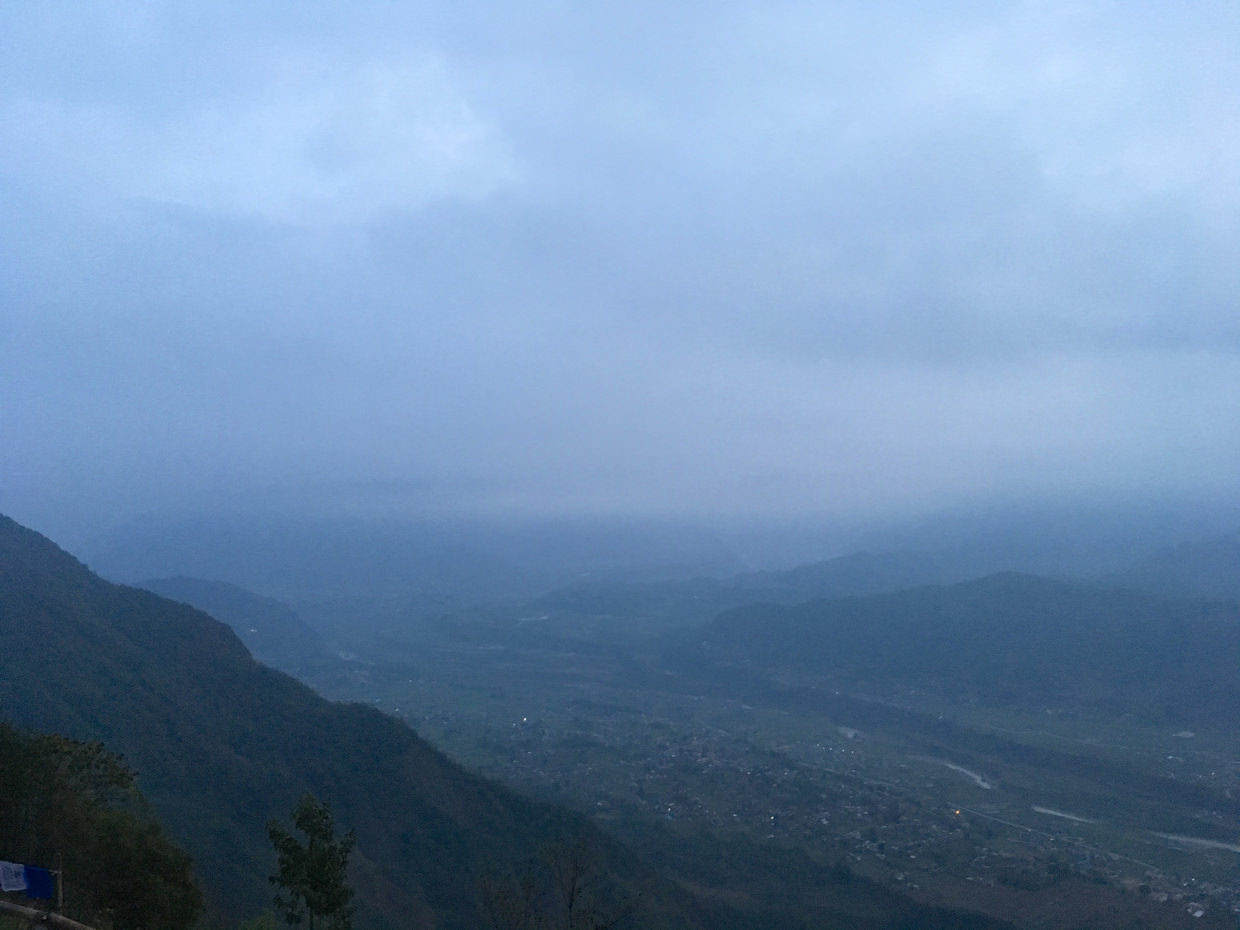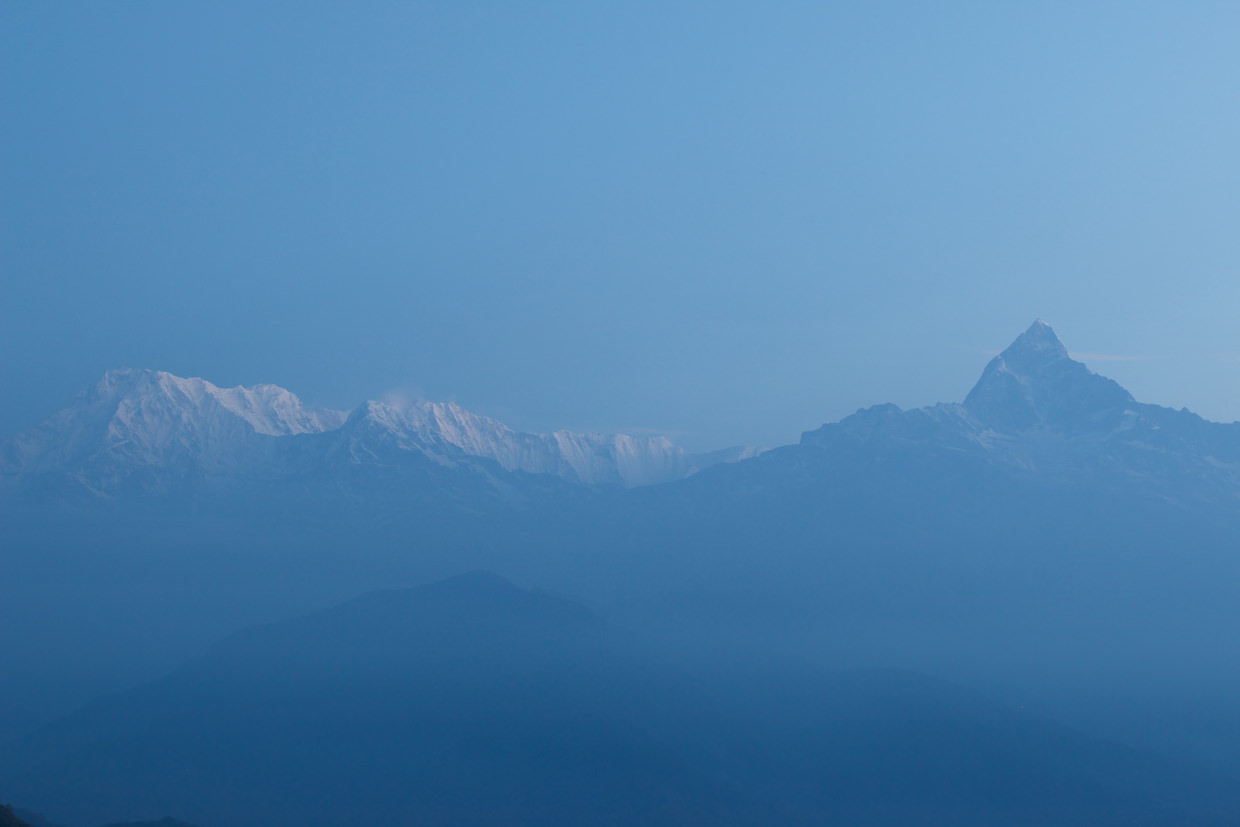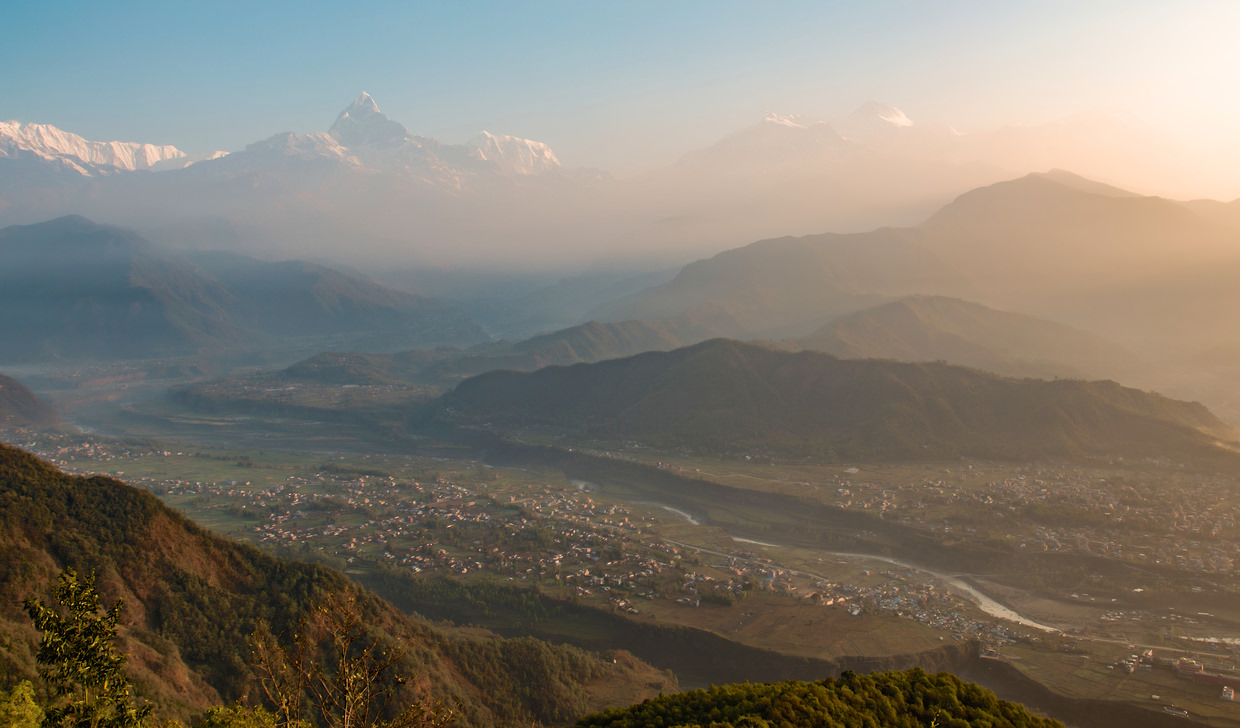To Sarangkot or not to Sarankgot
To Sarangkot or not to Sarankgot
Once more the iPhones woke us at an unearthly hour. I was beginning to resent the calm tones of my selected alarm as it repeatedly wrenched me back to reality. I peaked outside and concluded it was too overcast. Samantha thought otherwise, and demanded we at least try — all these days with no luck, we were running out of mornings. On the rooftop I stared at the sky, I needed to see stars to satisfy my conditions to go, in the blackness, through the orange nighttime hue, a solitary star appeared. Fine, I begrudged, let’s go.
Our taxi driver was also begrudging. On the traffic-less early morning streets of Pokhara we ambled along, the slowest taxi when the roads are safest. 1800Rs, right to the top. 40 minutes later, and at Sarangkot’s lower viewpoint he tried to offload us, “no, to the top”, we argued. “You can walk” - “Not from here”. Realising Sam had been here before and he couldn’t fob us off, he continued, onto the winding dirt road that coaches dare not follow. Near the summit, the taxi, which was going too slowly, got stuck in wet mud. We left the car and hiked up the last stretch of road, to the steps that take you to the viewing area.
The morning was brighter, and in all directions we could see only thick overcast cloud. Any remnants of stars or blue sky were gone. This was thick, impenetrable and unmoving cloud. We climbed anyway, and from the top, like at Poon Hill, we watched as tourists photographed themselves against the grey backdrop. We should have stayed in bed.
Our driver had managed to free his car from the mud, and the journey home was uneventful. At the hotel we had delicious toasted BLT sandwiches and fries, washed down with coffee.

Bread making
While I returned to bed, tried to sleep, then watched half of The Matrix on TV, Samantha returned to the Tibetan camp for another session with Yangchen. She wanted to make some of the “Tibetan” or “Gurung” bread we’d had on our trek.
They made three types of bread; Amdo Bhaklep, thick and small bread; Bhaklep, normal bread; and Hyoshang Bhaklep, deep fried bread. With the bread they also made chutney, and ate them both together for breakfast. Samantha brought a bit of each home for me to try.

Sun and storm
The weather cleared up, and for the first time in days there was hazy sunshine and patches of blue sky. A nice day for a wander, we joined the Nepalis on their day off, and walked along lakeside. In Nepal they work a 6 day week, with Saturday as their only day of rest. Today teenagers walked arm in arm, families dined at restaurants, and tourism gave way to the locals.
By the lakeside a film crew shot scenes for a game show, two couples tried to paddle across the water — crowds watched and laughed, despite the directors pleas for quiet. Contestants were very serious, and when one fell in the water onlookers, peering through a metal fence, roared with laughter, he slapped the water in frustration — he’d lost the paddle race.
From Boomerang, where we’d had milkshakes, we walked around the lake, stone buildings give way to wooden shanties, upmarket restaurants turn to cheap bars with bamboo supports. At one bar we stopped for drinks, the proprietor tossed our empty coke bottles out the back and we felt pangs of guilt. In the corner his son and friends made music. A group of backpackers smoked hashish and ordered more beer.
Over the lake the skies turned dark. From the mountains a storm was coming. The sunny interlude was ending far too soon, and afraid of being caught in the wet, we headed back. The storm was torrential, skies black, hailstones were flung from the sky, pelting street, window and rooftop. We watched it all from the safety on our room.

Back to Byanjan
Our lunch at Byanjan was so good that we chose to come back for our last evening meal in Pokhara. Tomorrow we would fly to Kathmandu.
We sat beneath an oil painting of the Annapurna massif, with mocktail and cocktail. We ordered spicy chicken curry, a tandoori platter and garlic spinach as a side. Behind us 3 generations of Nepali celebrated, Samantha made friends with their youngest and oldest.
Against candlelight, amidst regular power cuts, we enjoyed dinner.

Last chance for Sarangkot
For the last time alarms woke us up at 4:15am. This morning there was no sound of rain, and from the rooftop there were stars in all directions, a clear sky. We called for a taxi, and for the second consecutive morning we were driving to Sarangkot, this time a lot more hopeful. The taxi was as it is meant to be, we got there in half the time with minimum fuss. As we passed through the muddy quagmire that had been the fate of the last taxi, our driver instead focused on the brilliant panoramic views of the mountains, “the first views in 10 days” he said, you could see all of them.
With our bags, tripods and cameras, we clambered to the top to see the view. Arriving first, we nabbed a good spot and setup. In the calm of morning we watched the world wake up, tourists gradually filled the platforms, as the skies brightened and revealed the snow capped peaks of Machapuchare, Annapurna South and every other mountaintop you could ever see from here.
The sun poked its face above the horizon and little shards of orange caught the East faces, in the valleys mist began to rise, and small clouds formed over Phewa Lake. The snow radiated in the sunlight, and we marvelled at the wondrous Himalaya. The sounds of camera shutter and smartphone beeps punctuated the quiet.
We stayed as long as we could, until the sun was high against the azure sky.




Back at the hotel our BLT and fries on the veranda was in celebration rather than commiseration. The storm had cleared the skies and on our last day we’d seen what we were waiting for. We’d fly back happy.

Flying to Kathmandu
We booked the 1:30pm Yeti Airlines flight online and arrived at Pokhara airport about an hour ahead of time. The port is small, with ticket booths like those you’d find at a convention, porters carry your bags and drop them on trolleys where they wait until the plane arrives. Nothing runs on time here, the TV screen showing departures is updated by hand if the guy in charge catches someone looking at it forlornly.
Yesterday flights had been cancelled, and Sam befriended some Australians who’d been stuck in Kathmandu on their way out. Flights were temperamental at best, our international flight was over 24 hours away, but that didn’t stop my nerves. Perhaps because from the upstairs cafe, which looks out over the runway — the best indication of when you’ll leave is when you see your plane pull in — from here, I could see the mountains, where blue was displaced with grey and towering cumulonimbus clouds headed our way.
As we watched and waited anxiously for a Yeti airlines jet to fly in, the clouds got closer, the distant rumbles of thunder now audible. It takes about 45mins to get to Kathmandu, the plane we saw leave when we arrived was the one that needed to come back for us.
1h30 later than planned, the little 30-seater flew in and we were all ushered onto the flight. Through the windows I waited for the rain, and when the plane eventually took off I sighed with relief. We catapulted through the edges of the storm, and the plane was thrown about like a rag doll in the turbulence, I showed Sam the best way to hold onto her chair as she tried not to vomit. Of course the flight is short, and it was all over as soon as it had began, the whole experience still preferable to an 8h30 coach ride.
